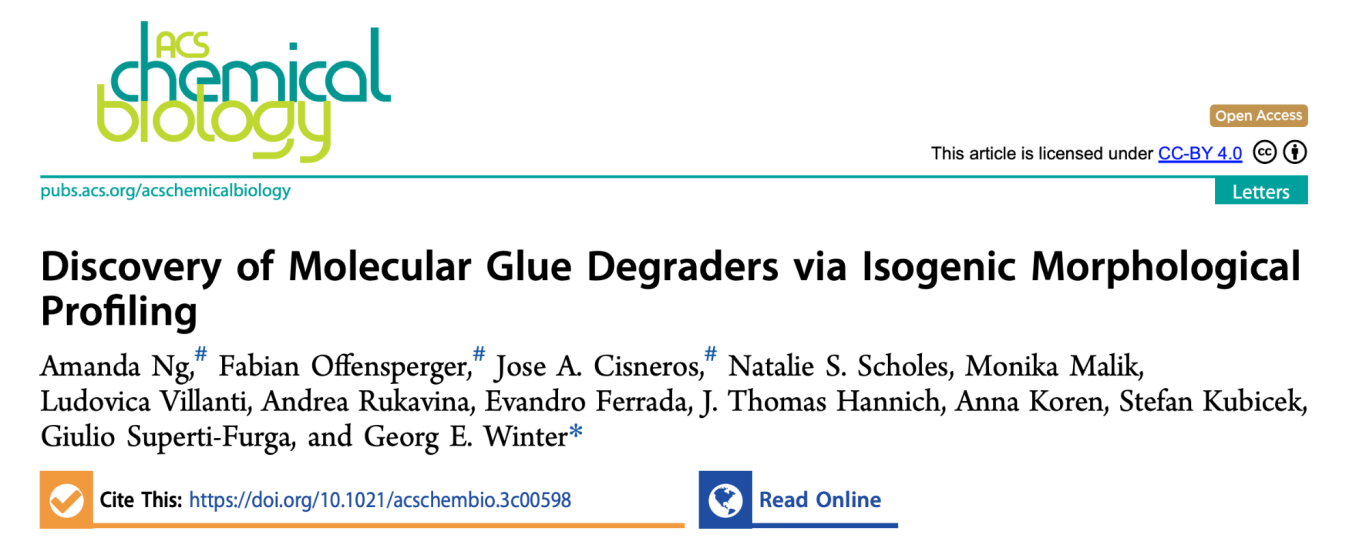Finding new molecular glues that do "interesting" things
28th November 2023

Historically most molecular glue drugs were discovered based on their function. The details of the molecular glue mechanism were only added afterwards (~60 years afterwards in the most famous case of thalidomide). The words "molecular glue" and "serendipity" seem to have a strong affinity to each other.
Glues can be very small in size so often don't have any of the tiresome pharmacokinetic complications often associated with 1kD+ PROTACs. In addition, it's become clearer that many small molecules, just like the ones sitting in pharma companies 3M+ screening collections, can act as glues - if you just know how to look for them. So, given these factors, everyone has realised that to identify molecular glues using a screening approach (or better, rational design) would be a rather useful thing to do. If you look through my directory of TPD companies, you'll find a lot of companies claiming they're doing exactly that.
There are several approaches to glue discovery using cell death as an endpoint (such as this nice hypoNEDDylated cellular approach). Using these strategies, you will find molecules which kill cells in an apparently E3 ligase-dependent manner but then you must deconvolute to find the target. Out of this, you'll find some glues but potentially rather a lot of less interesting stuff as well - there are rather a lot of ways to kill cells that are nothing to do with molecular glue mechanisms. This approach is also limited to finding mechanisms involving degrading essential proteins - if you screen a glue which potently degrades a non-essential protein, the cell will remain alive happily and the screening "hit" will never be found.
To design an improved glue discovery platform amenable to finding glues to non-essential proteins, The Winter group published recently in ACS Chemical Biology a new approach which marries cell painting with isogenic cell line-based glue discovery.
Cell painting is a very useful technique which uses a range of cellular dyes to characterise a large number of cellular phenotypic changes (often >3000 parameters) - great for when you're not quite sure what phenotype you are looking for so want to look at all of them. Cell painting will also identify cytotoxins but it's the more subtle phenotypes which are often of more interest.
Using a neat metal-free sulfur click chemistry, the team prepared a library of 132 CRBN-binding potential glues (+ controls). If you're looking for glues, looking for CRBN-based glues is a good place to start as this E3 ligase seems to be particularly well disposed to facilitating ternary complex formation, especially with G-loop-containing proteins, of which there are predicted to be up to 2500.
Using this, admittedly small, screening library, CRBN wt and isomorphic CRBN KO & CRBN overexpressing cells were profiled to look for compounds which give an "interesting" phenotypic change which appeared to be correlated to CRBN expression level across the cells. Here is where the use of isogenic cells with and without CRBN helps define "interesting" as "apparently CRBN-dependent". This is in contrast to the usual process of trying to interpret cell painting hits by comparing their phenotypic perturbation to a large set of reference compounds and initially assigning MoA using "guilt by association".
Given the vast amounts of data being assessed here, it is perhaps not surprising that some controls, known to work through CRBN-independent mechanisms, still gave profiles which (likely artefactually) suggested some CRBN dependence leading to the use of further statistical processing of data (Mann-Whitney U test..) to try to minimise this false positive rate.
Once all the data processing was complete, 8 library hits (6%) were seen. Through a process of comparison to positive controls (IKZF1/3 degraders, BRD4 degraders, GSPT1 degraders etc) using cosine similarity, the hits were clustered into similar MoAs and a single hit, FL2-14, which appeared to be quite different to most controls, was studied further.
Now if you want to find the MoA of a potential TPD drug, it's usually easiest to simply run some expression proteomics to see which proteins are reduced in level after drug treatment and that's exactly what the team here did and found that depletion of GSPT2 (and ZBTB39 & FAM83F but not GSPT1) is the likely mode of action. The usual knockout and mutation studies confirmed this.
So, a powerful isogenic cell-based approach has identified a novel GSPT2 degrader which could be very interesting except that no-one yet really knows if a GSPT2 degrader will be useful to treat disease or do anything else. We're therefore left with the question of defining what an "interesting" phenotype from cell painting really is (remember, novel can sometime be interesting but not always!) - that is perhaps a question which will need a lot more genomic data from healthy and diseased cells to be layered in. If you can find and validate useful cellular surrogates for disease then you can search for drugs which may correct this.
This isomorphic approach can be very powerful then: if, you are only looking for CRBN-based glues and if you know what an interesting hit could look like. The approach can perhaps be extended to use arrays of isogenic lines depleted in individual E3 ligases or other UPS proteins to find glues in a less biased fashion (though I don't envy the person who has to design the data analysis and false positive calling strategy) - defining the most "interesting" phenotype will also require, I suspect, much thought.
We need your consent to load the translations
We use a third-party service to translate the website content that may collect data about your activity. Please review the details in the privacy policy and accept the service to view the translations.

